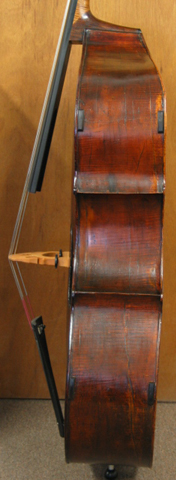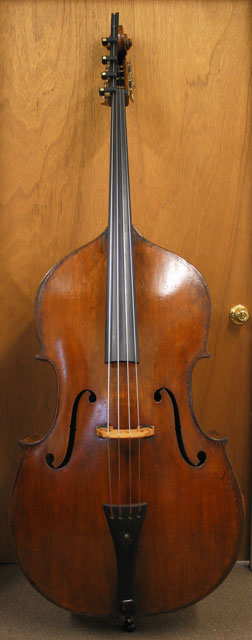
 |
|
#1
|
|||
|
|||
|
I'm interested in the correct treatment for slightly rough edges on the belly or back of the bass/from basic wear and tear over the years .I have a particular instrument that sometimes catches on the carpet if put on its side. Any info would be great thanks .....
|
|
#2
|
||||
|
||||
|
Well, i'd start by gluing any splitty bits back down. Then, depending on the value of the bass and the extent of the damage, i'd either smooth over and touch-up the edges so they don't catch, or if its a more valuable bass, consider replacing sections of the edging up to the purfling line.
I think you're going to have to provide more information/pics to get a better answer ... |
|
#3
|
||||
|
||||
|
Minor edge wear is best fixed as mentioned above by Matt. To avoid further wear, try adding some bumpers on the sides to cut down future wear. Severe edge wear requires the Top off for a permanent fix and the bass half edged underneath with the new outer/top edge glued to the supportive half-edge under it. Sometimes this can be done superficially from the outside but will take a bit more work to un-do and re-do when the bass finally comes apart. Be careful what glues you use. Strong Hide glue would be the best because it can be loosened and re-done later. Any other glues can damage the original wood around it and make future repairs more costly not to mention possible damage to the bass itself.
Here's some Ebony and Maple Bumpers as well as some synthetic ones.    On the edges, here are some pics of inner half edging as well as some outer edges in progress during restoration.    It looked like this when it was all finished;  The restoration work done on the basses shown above cost more than the average bass or two or three or four! On old valuable pedigree bass restorations, you let the Luthier do it right and pay what it costs. The Bass will thank you later as it has helped to keep and/or increase its value over time rather then decreasing it with less that a top professional repair. |
|
#4
|
|||
|
|||
|
Here is a pic of what I'm talking about . I'm wondering at what stage one has to take the top off to re-edge ?
I guess probably when the damage reaches to where the top meets the ribs ? I'll definitely look at putting bumpers on all my basses !! |
|
#5
|
||||
|
||||
|
Doesn't look so bad to me. I would try gluing any grain edges that are open and lightly sand till smooth. Then touch up with some spirit varnish to seal it. Then, make some bumpers so it doesn't get any worse. If ever a Luther goes to make a new edge from the outside which might be a temp fix, he will have to flatten the area a little more than you did so not to worry about the little sanding you did. If the Top comes off, more work will be done to support it from underneath as a permanent fix.
|
 |
| Currently Active Users Viewing This Thread: 1 (0 members and 1 guests) | |
|
|